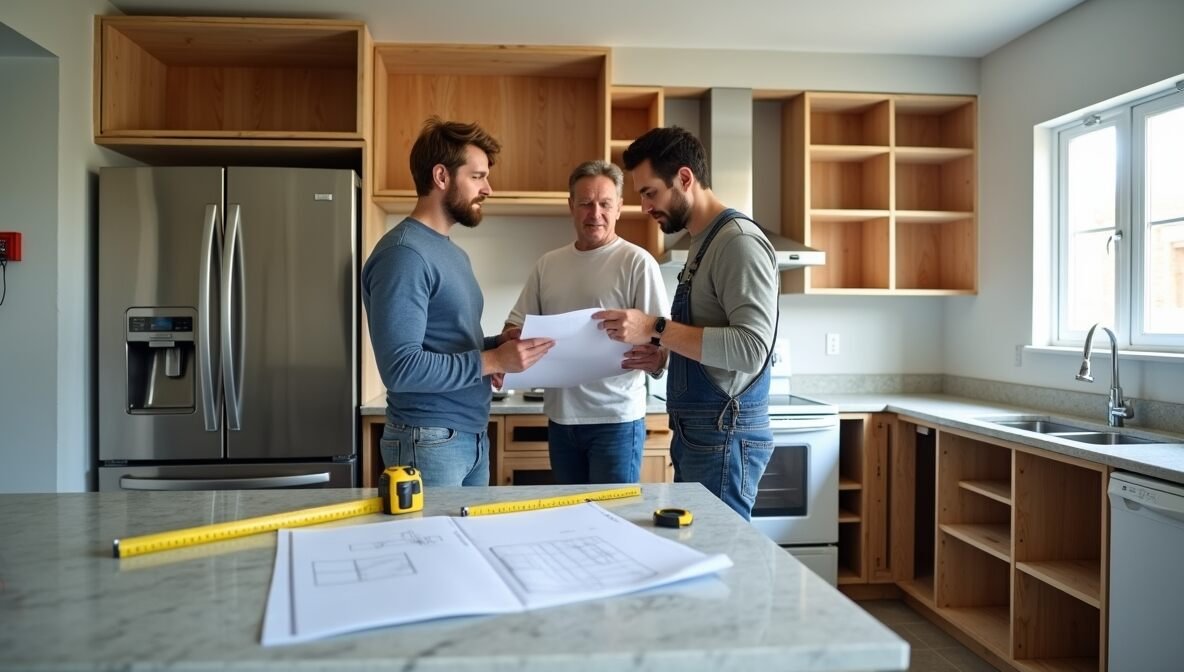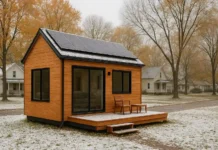Renovating your kitchen? Avoid appliance mistakes that can mess up your kitchen layout.
Many homeowners wait until the end of the project to choose their appliances, only to regret it later.
Placing appliances incorrectly, ignoring electrical planning, poor ventilation, and not having enough outlets can lead to delays, a cluttered layout, and safety risks.
Start planning your appliances early. That means measuring for fit, understanding power and plumbing requirements, and ensuring your kitchen layout supports how you cook and live.
In this article, we’ll cover the most common appliance mistakes during renovation—and how to avoid them with smart, timely choices.
Buying Before Measuring Cabinets
It is likely that buying appliances prior to receiving proper measurements of cabinets causes serious problems in the layout.
Inaccurate measurements might result in appliances not fitting in allocated areas, thus delaying and incurring unnecessary expenses in fixing them.
Lots more than width, depth, clearance to the door, and handle reach all influence the final installation. Even a minor mistake will not allow you to put cabinets in the right place to interfere with your kitchen layout.
Overlooking Ventilation Needs
Improper kitchen ventilation can result in more than an unpleasant smell sticking around in the kitchen; however, it may also trap moisture, cause the air to be of poor quality, damage the structure, and even health-related issues. Most of the house owners undermine the need to have a proper ventilation plan.
Why Proper Ventilation Is Essential:
- Health protection: In the absence of a good distribution of air, harmful substances such as smoke, grease, and fumes mostly build up, which serve to irritate the respiratory system and result in allergies.
- Moisture: Cooking causes excess moisture, and this can cause molds, mildew, and rotting of wood.
- Energy efficiency: Energy: The correct airflow helps in maintaining temperature and does not overload the HVAC systems.
- Code compliance: Lack of proper ventilation may lead to a breach of the building codes due to aging or improperly sized ductwork.
Common Ventilation Mistakes:
- Installing undersized or missing range hoods
- Skipping downdraft vents for island cooktops
- Using recirculating systems instead of ducted models
- Ignoring noise and power (CFM) ratings
What to Look For in a Ventilation System:
- High CFM ratings for effective smoke and heat removal
- Energy-efficient motors
- Quiet operation, especially for open-concept kitchens
- Design compatibility with your appliances and cabinets
Mismatched Appliance Styles
Mixing appliance styles and finishes isn’t necessarily wrong, but without a plan, it can make your kitchen look mismatched.
Why Matching Matters:
Appliance styles are not supposed to be inconsistent, because it can take away your whole design.
Any variation in the color shade, even in a contrasting bright white and off white, can cause your living room to appear fragmented or dated.
Common Style Conflicts Include:
- Glossy vs. matte finish combinations
- Clashing handle designs (bulky vs. minimalist)
- Color shade variations (white, ivory, cream)
When Mixing Styles Works:
Mixing brands and styles can create a curated, custom look—if done intentionally. To pull it off:
- Stick to a unified color palette (e.g., stainless steel with matte black)
- Choose similar handle shapes or trims
- Use cabinet panels to mask appliance differences and create a seamless look
Performance Over Brand Uniformity
Although visual consistency is accomplished by going with a single brand, mixing brands is also acceptable when it leads to improved features, scale, or price points in your space. Choose utility over brand allegiance whenever it is required.
Forgetting Electrical Requirements
Ignoring the requirements of electricity may lead to a failed inspection, expensive delays, or may just not work. All appliances require voltage, amperage, and outlets: these should be planned in advance.
What to Check:
Voltage: Find out what 110V, 220V, or more will be required by your appliances.
Amperage: More substantial appliances will require dedicated circuits
Location of outlets: wall-mounted equipment, such as wall ovens or microwaves, requires accurately positioned outlets
Gas-to-electric conversions: You need time to give up gas and have electric wiring in and newly required permits
Certain specialty fixtures, such as wine coolers, induction cook tops, or built-in espresso machines, also may need GFCI protection or separate circuits.
Peo Tip: An electrician will provide the load calculation to make sure that your panel is up to all your new appliances.
Save Money and Avoid Setbacks
Don’t wait until your cabinets are installed to shop for appliances. Buying early helps ensure:
- Accurate design and fit
- Access to seasonal promotions and bundle discounts
- Fewer delays from backorders or delivery issues
Looking for smart appliances? Check out the latest smart refrigerators at Homery for great deals.
And if you’re searching for a reliable washer, we recommend the Speed Queen TR3003WN Washer, renowned for its durability, efficiency, and space-conscious design.
Homery makes it easy to filter by size, energy rating, and finish, so you get exactly what fits your layout.
Source from Reliable Partners
Remodeling a kitchen is a major investment—don’t compromise by buying from unverified sources.
Homery offers a wide range of appliances for modern homes, from premium brands to everyday essentials.
Here’s what you get with Homery:
- Trusted, high-performance appliance brands
- Full manufacturer warranties
- Detailed product specifications for designers and planners
- Flexible delivery options to match your renovation schedule
- Expert customer support and reliable after-sales service
Renovating Your Kitchen? Avoid Mistakes
Consult the professionals when ordering your appliances before construction.
The little details must not result in expensive delays. Whether you are facing a complete makeover or doing replacements of certain pieces, planning can save you time, money, and headaches.






